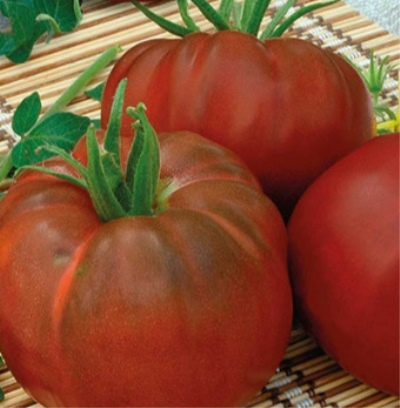
- Authors: Klimenko N.N., Kostenko A.N.
- Year of approval: 2010
- Category: grade
- Growth type: indeterminate
- Appointment: fresh consumption
- Ripening period: ultra early
- Ripening time, days: 83-88
- Growing conditions: for open ground, for film greenhouses
- Bush size: tall
- Bush height, cm: 170-190
It makes sense for novice gardeners to pay attention primarily to those varieties that have been bred for a relatively long time and have managed to thoroughly recommend themselves. Tomato Negritenok can be considered a striking example of such crops. Its parameters and cultivation features deserve a close analysis.
Breeding history
The Negritonok tomato was bred in the distant 2000s. Its state registration and entry into a special register took place successfully in 2010. The creators of the plant are breeders Klimenko and Kostenko. It is known that the capacities of the agricultural firm "Poisk" were involved.
Description of the variety
Tomato Negritok is tall. It can reach 1.7 and even 1.9 m. The foliage is usually of an average size, like most tomatoes. Also, a simple green color is its standard species feature. Cultivation is possible both in the open air and under film protection.
The main qualities of the fruit
They are as follows:
- at the very beginning, the Negritenka berries have a green tone, and a dark green spot develops near the base;
- ripe harvest has a pleasant brown tint;
- the usual mass of tomatoes is 0.1-0.15 kg;
- rounded shape;
- pleasant smooth skin;
- simple type of inflorescences;
- articulated version of the stalk.
Taste characteristics
Basically, the harvest is eaten fresh, without any processing. It tastes invariably sweet. An attractive aroma is also noted.
Ripening and fruiting
The Negro, despite its "tropical" name, in the conditions of Russia belongs to the ultra-early varieties. Most often, from 83 to 88 days pass between the sprouting of seedlings and obtaining a decent harvest. It is worth emphasizing that, as always, weather conditions can make significant adjustments. You can harvest crops in:
- July;
- August;
- September.
Yield
The variety belongs to the high-yielding group. Under normal conditions, the collection will be approximately 6.5 kg of berries per 1 m2. Correct agricultural technology can play an important role in this.
The timing of planting seedlings and planting in the ground
It is necessary to sow seeds in boxes or containers in the first decade of March. Sometimes this is done in the first half of the second decade. If everything is done correctly, and the agricultural technique for caring for the seedlings is correct, it is advisable to transfer the seedlings into the ground between May 15 and June 5. To exclude errors, it is necessary to take into account the degree of development of specific plants. You also need to pay attention to the weather conditions.

Growing tomato seedlings is an extremely important process, because it largely depends on whether the gardener will be able to harvest at all. All aspects must be taken into account, from seedbed preparation to planting in the ground.
Landing scheme
The planting material supplier insists that the plants should be planted according to the 600x500 mm system. It makes little sense to look for some alternative solutions.

Growing and care
Eliminating stepchildren, tying them to a support and giving the bushes the necessary shape will become strictly mandatory for anyone who wishes to raise a Negro Kid. The bushes will have to form in 1 or 2 stems. The choice of a particular option is determined by purely horticultural considerations and personal taste. This variety is quite resistant to damage:
- alternaria;
- fruit cracking;
- cladosporiosis;
- tobacco mosaic.
The danger of such infections arises mainly in the years when the pathogen is activated. But even then, proper farming and preventive measures are almost guaranteed to protect crops. The same applies to other pathologies and to exposure to insect pests.
When growing seedlings, supplementary lighting is strongly recommended. Seedlings should be fed every 2-3 weeks.
Other recommendations:
- feeding seedlings for 20 days before planting;
- watering plants every 7-10 days (in cool dry weather);
- pinching the top when the bush reaches a height of 2 m;
- prevention of fungal infection with Fitosporin.




A plant needs different micronutrients at each stage of growth. All fertilizers can be divided into two groups: mineral and organic. Folk remedies are often used: iodine, yeast, bird droppings, eggshells.
It is important to observe the rate and period of feeding. This also applies to folk remedies and organic fertilizers.


Review overview
The name of the variety is fully consistent with its appearance. The plant performs very well and is attractively fertile. However, sometimes berry picking does not live up to expectations. The incidence is very low. The gastronomic culture is very good.

























































































